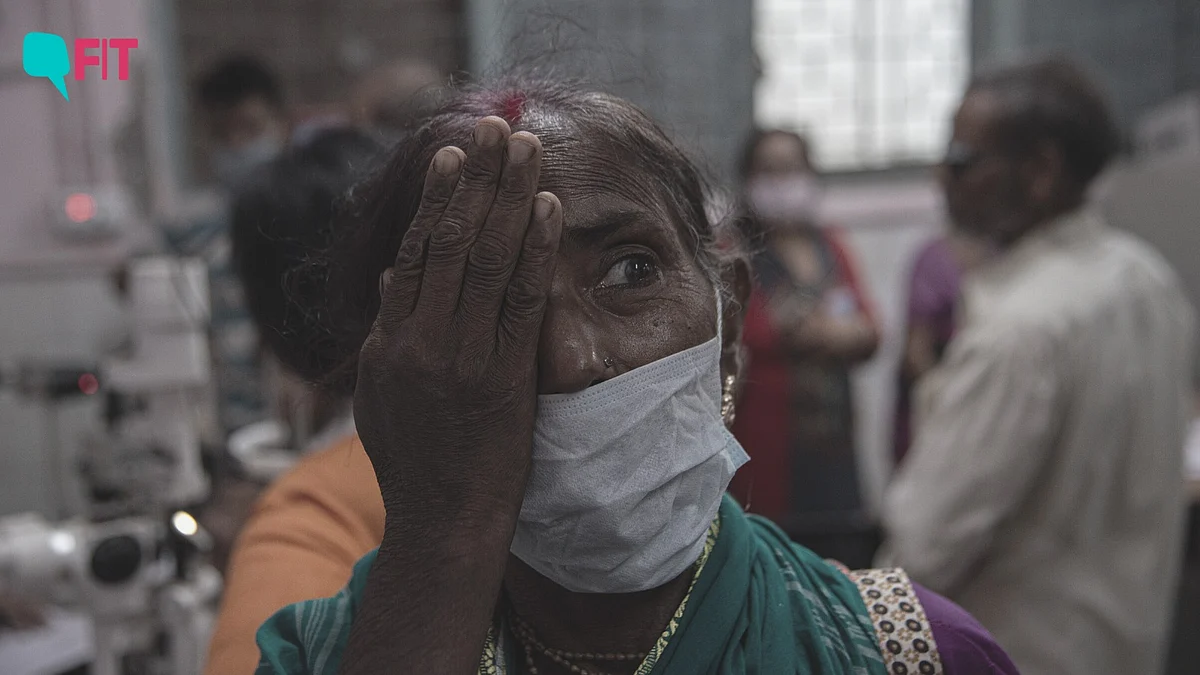In Photos: Fighting Corneal Blindness in Kolkata, One Weekly Clinic At A Time
Corneal blindness is a group of eye illnesses that produce corneal scarring and blindness.

advertisement
Corneal blindness is a group of eye illnesses that produce corneal scarring and blindness by affecting corneal transparency.
Infectious causes of corneal blindness include bacteria, viruses, fungi, and protozoa.
(Photo: Ritayan Mukherjee)
(In picture: A patient undergoing a slit lamp test.)
The most prevalent risk factors include trauma, contact lens use, and the use of steroid prescription drugs.
At Kolkata's Regional Institute of Ophthalmology's weekly cornea clinic, 150–180 patients line up to get examined each week.
(Photo: Ritayan Mukherjee)
Eye pain, which can range in intensity from mild to severe, is one of several symptoms of corneal blindness. Other typical symptoms include light sensitivity, hazy vision, ocular discharge, watery eyes, etc.
Meena Devi, a domestic help who hails from West Bengal's 24 parganas (South) district, faced issues with her vision for two months before she sought help from doctors.
(Photo: Ritayan Mukherjee)
Md Jahangir, a rickshaw puller, too struggled with symptoms for three months. Now, he is battling blindness brought on by an infection in the cornea. For someone like Jahangir, who is the primary breadwinner of his family, the effects of this has been catastrophic economically.
(Photo: Ritayan Mukherjee)
Dr Sanjay Chatterjee, an ophthalmologist, conducts an external torchlight examination on a patient. The test helps inspect the eyes, especially the cornea for any abnormalities.
(Photo: Ritayan Mukherjee)
Parul Mandal, who hails from the South 24 district and was visiting an eye doctor for the first time, sobbed at the clinic. As a side effect of the drug used to treat her chicken pox, she had been experiencing symptoms of corneal blindness and could hardly stand the light.
Dr Chatterjee confessed that in the condition that she was in, "even an operation might not help her eyesight."
(Photo: Ritayan Mukherjee)
For a 14-year-old (who did not want to be named), a herpes simplex virus in her eye damaged her cornea. Clinically known as Herpes Keratitis, this is a condition that affects the clear layer that covers the front of the eye (cornea).
(Photo: Ritayan Mukherjee)
A patient who has lost vision is examined by Dr Ashis Majumdar, who heads the weekly cornea clinic at RIO.
(Photo: Ritayan Mukherjee)
Dr Ashis Majumdar and Dr Asmita Gope, examining an infant, tell FIT, "A newborn's cornea can become clouded due to bacterial or viral illnesses (such as rubella or herpes simplex)."
(Photo: Ritayan Mukherjee)
A Schirmer test is being performed on a patient to gauge tears. One of the main corneal-related causes of blindness is a dry eye illness.
(Photo: Ritayan Mukherjee)
Although a wide variety of medications are required to treat corneal problems, the most frequently prescribed medications are natamycin, tobramycin, and moxifloxacin.
Dr Majumdar says, "There are several cases where I have come across a patient's eyes that can be saved if the family members brought them here on time. Many patients stop visiting us or stop their medications just after one or two visits. Corneal Illness can be treated, but it also needs continuous care. It's a long-term process. A damaged eye can't be saved overnight."
(Photo: Ritayan Mukherjee)
Binay Pal of Hooghly district, who has completely healed from corneal disease and regained his vision, came to the clinic for a final check-up. Opening a popular Bengal daily to its television page, Pal told FIT, "I'm happy that I can start watching Bengali soap operas."
(Photo: Ritayan Mukherjee)
In India, an estimated 1.3 million people suffer from corneal blindness, the National Programme for Control of Blindness had stated in 2022.
Even as the burden of the disease is increasing, awareness about it hasn't kept up. Corneal blindness is more common than we'd like to think.
At Kolkata's Regional Institute of Ophthalmology's weekly cornea clinic, 150–180 patients line up to get examined each week. FIT visited the clinic last week.
(Ritayan Mukherjee is an independent photographer from Kolkata. He is working on a long-term project that documents the lives of pastoral and nomadic communities in India. Ritayan has several publications and Ramnath Goenka Excellence in Journalism Awards (RNG Awards) in his portfolio.)